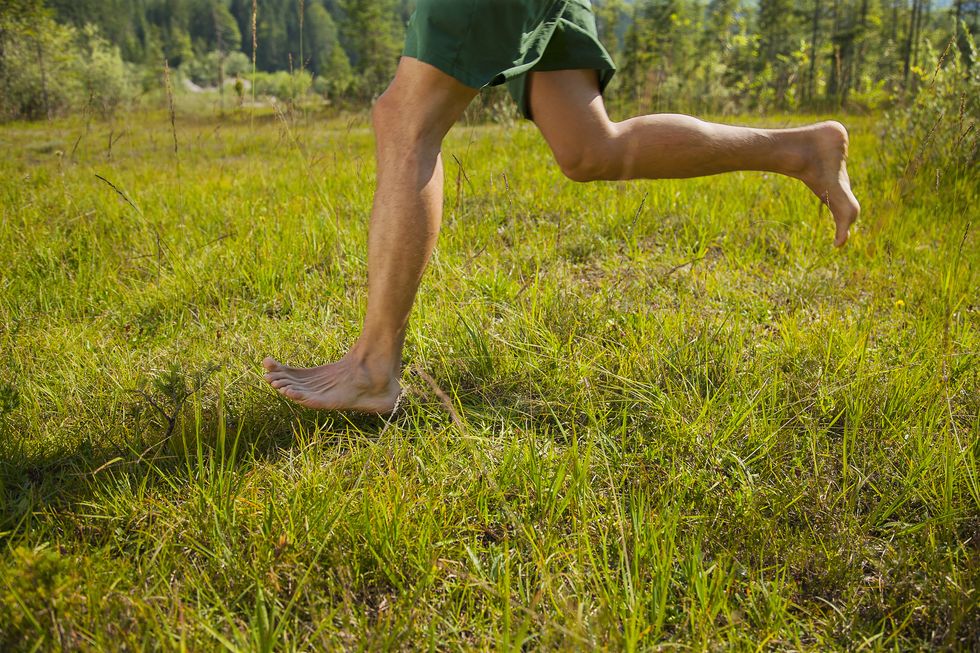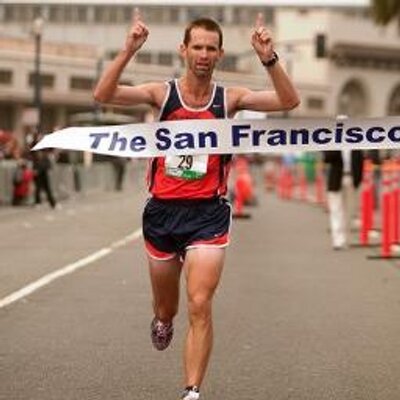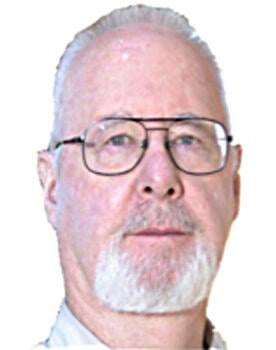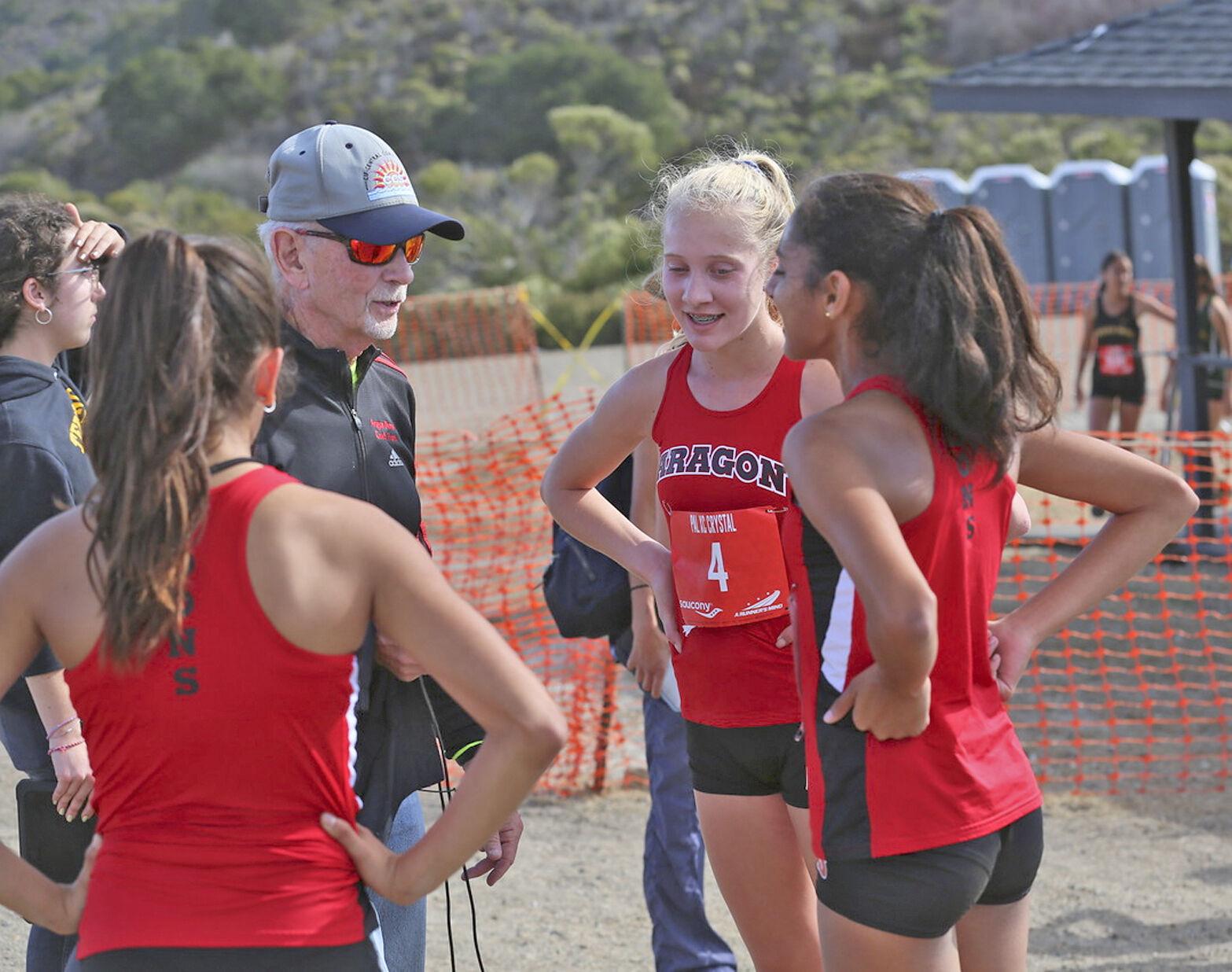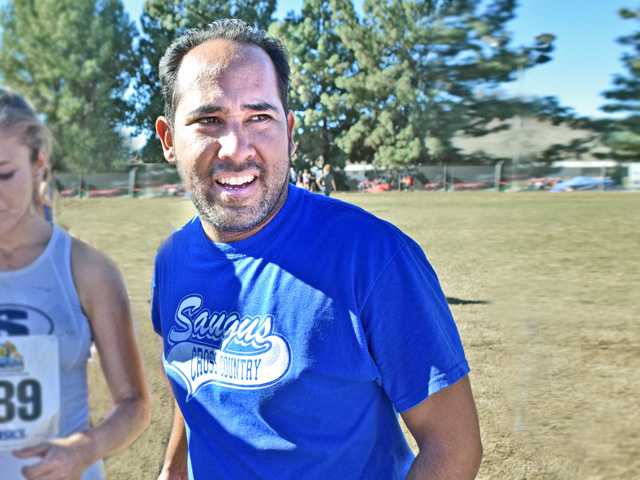In case you missed it, Rheinhardt Harrison ran a 4:01.34 mile last night at the Music City Distance Carnival. The significance of that performance is that Harrison is a rising junior in high school which means his time breaks the sophomore classes record previously set by Edward Cheserek at 4:03.29. Harrison is also coached by Tinman so it seems timely to move this interview back to the front page.
===============================
Today we catch up with one of the premier distance coaches in the United States as well as the head coach of the Tinman Elite, Thomas "Tinman" Schwartz (photo courtesy of team website). I have enjoyed listening to him sharing his knowledge with many coaches on our weekly coach's meeting online. You can read more about Tinman on his bio on his team's website at this LINK. You can also check out his website at https://runfastcoach.com/.
Thank you to Tinman for taking the time to fully answer my questions. The following is reserved intellectual property and should not be copied, transmitted, or used in any way that limits author rights.
1) For those of us that don't know, how did you get your Tinman moniker?
I was born in Menomonie, WI, which (for many years) had the Tinman Triathlon…a shorter version of the Hawaii Ironman Triathlon. Thus, my nickname is associated with my birthplace, which, to me, still has many positive memories from my younger years.
2) What led you into running and what other sports did you participate in aside from XC and TF?
I participated in many ball sports as a kid and through high school. For many years of my youth, baseball was my favorite sport. My second favorite was basketball; third was track and field, and cross-country and the fourth was football. Success as a 7th-grade cross-country runner motivated me to become a good (fast) runner, yet I did not stop playing other sports until after graduating from high school. I fell in love with running because it was such a positive sport. The coaches, athletes, and even their parents, were upbeat, supportive, and interested in the pure simplicity of running. Early, it was clear to me that the more I worked to improve, the more success I had, as measured by the time it took to run the race distances. The dedication factor was the central tenet of improvement; not referees, not whether coaches would put you in the game; not how big you were or to whom you were related! Not your last name, how much money your parents made, or whether you were in the popular group. It did not matter in the sports of cross-country or track and field. Faster is faster, and there is no way around that point!
3) Looking back at your own running career, what are some of your proudest achievements and in hindsight, learning situations that have made you a better coach?
The proudest moment of all was my high school team qualifying for the state championship in cross-country. No previous team from my school (Forreston High School in IL) ever went to state. We placed 7th in the state meet, but we were 10 points out of 2nd place. It was a close one! And, I think we might have placed 2nd or 1st had it not been for some unfortunate circumstances. One was my best friend Loren, who was running with cancer in his leg. A week after the state cross-country meet, his leg was amputated. Imagine how much better he could have run with a healthy body. Loren suffered greatly through numerous chemotherapy treatments and surgeries and took his last breath at age 21, which was devastating to me. I still miss him. He was my buddy, and I will always recall his sense of humor and his positive way of framing the difficulties of life. The learning I gained from running was how important it is to be passionate about your sport, the value of inspiring others to greatness, and do your part to helping the team succeed or bond. Loren did that for my teammates and me, and so I try to do that for runners, coaches, and their support cast. If I do nothing in the sport but help others, I will be satisfied. I learned that I do not have to be an Olympic champion to inspire others to greatness.
4) Who were the coaches that inspired you as an athlete and what lessons did you take away from them?
Mr. McMorris was my first great coach. He was smart, passionate about helping kids achieve success, and related well to people. He was the one who told me that I was one of the more passionate kids he had ever coached and that I would run through a brick wall if that would make me a better runner. I saw him just two years ago when I went back home with my brother to clean out the home of my (deceased) parents before selling it. Mr. Mick, as we all called him, age 86, walking with a cane up his driveway, turned when he heard my voice, a voice he had not heard in 30 years, and exclaimed, "Schwartzeeee!" (he always added the letter "e" to my name in an exaggerated way. I greeted him and asked how he was doing, and he said he was struggling to move like he used to, but that is how it goes. Then, he paused and said, "You were always one of the greats! You had the stuff champions are made of! I never saw anyone fight harder for a win than you did!" Honestly, I still cannot believe he remembered my name, voice, or face. He coached hundreds of kids over the decades. The critical point I am making is that Mr. Mick made people feel important. He recognized what made them personally tremendous and made sure to tell them. I also learned from him that nothing replaces distance runs for building fitness as a runner. He taught me that intervals could shape a runner quickly, but the key to success is to build endurance, which is not a quick fix. He also taught me that trying hard is not enough in sports; you need to have an optimal technique for transferring your fitness to high levels of performance. Since my adolescent days, I have centered my focus on two main areas: better methods of building endurance and better means of generating improved technical efficiency that leads to lower energy costs.
The other coach who greatly influenced me was Dr. Phil Esten, who coached and taught at The University of Wisconsin - La Crosse. Right away, Coach Esten recognized that I might be able to contribute to the team in ways other than running. He saw that I had a passion for reading research and for questioning conventional training approaches. He was an unconstrained man: he would change his strategies when a person provided a good rationale for making changes to the standard practice. Coach Esten let me write training in the team's preparation by the time I was a junior in college. As a senior, he allowed me to coach the team's steeplechase runners. At the conference meet, they placed 1st, 3rd, and 8th place in the conference meet - and it may be worth noting that our conference has the most NCAA DIII qualifiers in the nation. To me, Coach Esten's encouragement to pursue my passion for the sport through coaching altered my life for the better.
5) What led you into coaching and what did you do to prepare yourself for your first coaching experience? What else have you done aside from coaching?
As mentioned above, Mr. McMorris and Dr. Phil Esten, who were my coaches, motivated me to become a coach. To prepare myself, I dove into coaching in 1989 and never looked back. Extensively, I studied exercise science via formal education (undergraduate and graduate, and all three levels of USATF coach education and certification program, as well as the IAAF Level 5). I have made it a point to read a lot of books on running and exercise physiology. I have talked to a plethora of coaches whom I respect, for they have great insights from which to learn. In the last four and a half years, I have worked on a Ph.D. in Health and Human Performance (an old-school term for Exercise Physiology or Exercise Science). Once the COVID dissipates and our country returns to normalcy, I'll be allowed to collect data for my dissertation research. Then, I can analyze the data and write conclusions to answer my hypotheses related to aerobic and anaerobic differences in human running performance, as demonstrated by changes in power and speed over time and distance, as well as gender and experiential differences. Aside from coaching, I worked for many years as a radiology technologist and public-school physical education teacher.
6) You have a fairly unique training philosophy. How did you arrive at that philosophy? Was there a eureka moment or was that as a result of years of experience and research?
No one moment magically generated the basis of my philosophy. The main facet of my philosophy is to keep the ball rolling (KTBR). I suggest, look at any sport, and it is noticeable how teams that do well in the championship portions of their post-season have momentum on their side. Organizations that do well in the early part of the season - winning every game or every race using maximal effort - can lose momentum and have little success in the latter parts of their regular season. In some ways, the fable of the Turtle and the Hare represent sports. The Turtle, who is slower but steadier in the early going of the race, tends to do better at the end of the competition by not burning up all the energy too quickly.
In terms of training, I am a believer in the idea of multi-dimensional training with a lean toward aerobic development and skill acquisition, at least for runners competing in events lasting more than 3-minutes. I also believe that it is nonsense and erroneous to think people can develop only one form of fitness at a time. Conventional phasic training models, as described in standardized (formalized) coaching education programs, need to be adjusted to match the reality of how people generate better performance capacity. In my view, the main flaw in sports pedagogy relates to the model of multiple energy systems. The model is false because muscle contraction occurs strictly from the catabolism of ATP. Thus, we have an ATP system. Accepting this to be accurate, we then must come to terms with the reality that it is nonsense to train various "energy systems" separately. Therefore, single workouts can integrate different intensity levels.
The basis of my Integrated Training System (philosophy) explains how we have just one energy system. Thus, blending various intensities into single workouts is not only possible quite useful. Furthermore, the practice of integrating multiple work intensities into one training session simulates the demands of racing in which runners go out fast, settle back, surge, put in long sustained efforts, and then kick. Additionally, it boosts motivation for variety is the (mental) spice of life.
7) You are certainly passionate about the history of the sport of distance running. Where did that love of the sport begin?
I think my love of the history of distance running formed through my interest in knowing about how our sport evolved in terms of performance (times over distances). I wanted to understand why we adopted specific methods and how they changed over the years. To me, the evolution of knowledge is formed layer upon layer. If we know where we came from, know the gains we have made, and know the sticking points in our progress, we can formulate better ideas about how to move forward to make improvements. To me, this is the basis of development in both social and scientific domains. I am fortunate to have been in the right place and the right time to see great people compete, read about the ideas of great coaches, and to have read research articles of great exercise physiologists. The latter people took the science route to examine phenomena and uncover the truth. In that regard, and from their inspiring work, I have made it a point to keep learning. I cannot emphasize enough how valuable it is to want to know more, want to understand why, and have a desire to develop better strategies. When I read about famous coaches and what they learned in their situations, I imagined being in their location and facing their specific challenges. Imagination is the foundation of all great discoveries; it seems to me. Imagine what could be. Imagine how to travel to that place in space or time. Let us think about the rope to which we hold tightly. Question: Is it possible that we are in a stalemate of no progress? Indeed, we feel secure, and from that, security develops complacency. Letting go of the fear that we could drown, we instead navigate the oceans of life and discover the beauty of far off lands.
8) Aside from your own coaches, who are the coaches that you have studied and collaborated with that have had the biggest impact on you?
I have studied the writings of several legendary coaches of the sport. Arthur Lydiard, Percy Cerutty, Gosta Holmer, Franz Stampfl, Dr. Herbert Reindel, Dr. Woldemar Gerschler, Ernest Van Aaken, Mihály Iglói, Bill Bowerman, Bill Dellinger, Harry Groves, Frank Horwill, Harry Wilson, George Gandy, and Pat Clohessy. I have studied the works of great sprint coaches in track and field. I have studied the works of great cycling, swimming, cross-country skiing, and speedskating coaches. I have read thousands of research articles written by brilliant exercise scientists, sports psychologists, and biomechanists. I have read the works of great thinkers outside of sport to acquire different perspectives and question my thinking of how to solve problems. I have studied the works of great philosophers, for example, and found some of their insights to spot-on to what humans think, feel, know, and understand (or do not understand). It is clear to me that we have much to learn. It is clear to me that we have so little that we know. It is clear to me that questioning the doctrines we accept so quickly is the best, and perhaps only, way forward to greener pastures where life, vitality, and renewal are possible. We must not allow limitations. We must not be afraid to fall. We must accept that life in our world is not constant and that the law of entropy encompasses our days and ways always. All "things" decay without the input of new energy. Stay comfortable, and you will be left behind!!
9) When you put a training plan together, what are the key components that have to be present? How do you break up the blocks of training? 7 days? 10 days? Another length of time? How far back must you start from your goal race? What are the key nonrunning components that have to also be present?
I need to know the history of an athlete, the race schedule, vacation times, constraints such as no running on Sundays or working a part-time or full-time job, and so on before forming a training plan. The fitness and experience level of the runner/athlete is an important consideration. I use cycles of training, rather than phases. Typically, I create two or three-week cycles that include the various components needed to build layer upon layer of fitness. I "buildup" a runner toward the goal event rather than assign isolated training in phases. Most runners (1500m to the marathon) should train for the 3k to 5k event most of the year. It does not take much specific training to sharpen a runner for the 1500m when they have high fitness in the 3k-5k. In my view, it only takes about six workouts to be ready for a 1500m/1mile race if you have solid 3k-5k fitness. The same goes for the 10k - if you are fit for the 3k-5k, it takes about six workouts to be ready for the 10k. A marathon runner should train for the 5k-10k most of the year and then switch (about 12-weeks before their event) to longer runs with quality that prepares them for the marathon race. It is a bad idea, in my opinion, to train for the marathon year-round. You lose too much power if you only prepare for the marathon. Nonrunning components include strength training, flexibility training, rolling out tight muscles, and any other therapies that facilitate the KTBR philosophy. Much depends upon how much the runner can afford. Epsom salt baths, elevating legs, and rubbing in Arnica gel can be low-cost therapeutic interventions if your $ resources are low.
10) What are the biggest errors that you see high school coaches make when it comes to coaching distance runners?
(1) Reducing training volume (mileage or minutes) during the race competitive season. The conventional model taught by organizations such as USATF is to build a base of miles before the race season, then reduce mileage while increasing the training intensity. The model is often not practical for most runners who compete in the 5,000m event. In contrast, the model works well for sprinters (100-200m runners) and long-sprinters (400-800m runners) who need an extremely high level of anaerobic capacity and speed. The model is generally ineffective for helping distance runners perform well at the end of the competition season. Remember, the 5,000m race is highly aerobic - 94-97% depending on the duration of completion (the greater time to complete the distance, the higher percentage of aerobic energy contributes to the overall performance).
(2) The second major mistake of coaches it failing to individualize training volume, pace, and intensity of runners. Consider the five main factors, as follows: (1) years of running experience, (2) year of sports participation experience, (3) prior training experience (think mileage/minutes and intensity), and (4) fiber type profile of the runner, and (5) maturation of the runner (both biological and emotion/cognitive age). Chronological age is not nearly as relevant as how physically mature a runner is and how mentally (problem-solving) and emotionally mature the runner is in terms of how well they handle the training, instruction, and pressure.
11) What do you feel has been the biggest change in training in the past 20 years and can you predict a trend that elite distance coaches seem to be headed toward that could revolutionize the sport?
A reduced amount of racing is the trend I have seen over the years. When I was in high school, we raced at least twice per week. That was a recipe for limiting the development of runners. Mainly, the way to have team success back then was to build a bi aerobic endurance "base" in the summer. Once the cross-country season started, it was challenging to increase the amount of distance running kids could do. They were too tired from racing frequently. Now, primarily due to budgetary constraints, the number of races is about one per week at most high schools. Fewer scheduled competitions help runners improve to a higher performance level. They can build aerobic fitness throughout the competitive cross-country season more quickly than they could if they were racing twice or three times per week.
The use of critical velocity (CV) training (about half-hour race speed) as a regular tool for developing aerobic fitness is another significant change (for the better) in the sport. In my view, CV training has revolutionized physical preparation training, especially at the lower developmental levels (middle school and high school years). The introduction and of CV as a central training method was my focus on the internet starting in the year 2002/03. Since those early years, the acceptance of the CV idea has worked its way into the conventional thinking of many high school coaches who are committed to developing their athletes to be state champions and NXN team qualifiers/contenders. It is noteworthy that some university coaches are using CV training as an integral tool, although not the only means, for developing their runners to high levels of aerobic fitness. Examples of programs that use CV include Northern Arizona University and the University of Portland. The impressive coaches of these programs are committed to integrating any effective training method that makes their teams successful at the NCAA Championship level. The coaches do not sit on their laurels and stagnate. They adopt effective practices without concern for what the critics think. They care more about their athletes and programs than they do about the naysayers who find fault and ruin the image of the sport.
The relevance of CV-type training in the development of aerobic stamina - as measured by the speed at which lactate threshold occurs – is fundamental to my theoretical construct that emphasizes aerobic fitness development. My model stands on the shoulders of Arthur Lydiard, the long-ago great coach who constantly talked about the importance of developing cardiovascular fitness. While his method centered on running lots of distance/mileage, my approach emphasizes CV training as a time-efficient conjugate that improves aerobic fitness but takes it one step further. In my theoretical model of aerobic fitness training, the issue with the distance running model is it is too general, and it falls short of developing bundles of fast intermediate (Type IIa) muscle fibers (motor units). The power required of steady-paced distance running is insufficient to activate the Type IIa muscle fibers unless a runner goes far and thereby depletes the glycogen (store carbohydrate) levels of Type I (slow-twitch) fibers. That is, only when the glycogen levels are low will the Type IIa fibers be activated at a slow or moderate pace or power.
In contrast, running at roughly half-hour race speed or power activates the Type IIa motor units immediately. Thus, the Type IIa fibers become trained to use available oxygen to generate ATP (the energy currency of muscle contraction). The better the ability of the Type IIa fibers to use available oxygen, the better the strength of the runner to sustain a medium-fast to fast speed. The above is central to my CV theoretical model, but there is more. This brief description is merely an introduction to the model. The underlying phenomena of how energy reforms (ADP to ATP), how the motor units are activated and engaged, and how fitness develops, is both complex and fascinating.
While VO2max training (think 2-3k race speed) plays a role in the training plan design, the use of CV-type training is more longitudinally impactful. The intense nature of VO2max work tends to limit how many weeks in a row it can be performed in practice before exhaustion halts progress or causes performance decline. It is my observation that about 5-6 weeks of VO2max training is all athletes can handle. In contrast, CV training has far less fatigue, and therefore this workout can be run most weeks of the year.
Sadly, a significant change in the sport over the last 20 years is the immense amount of negativity on the internet by individuals who are jealous of others or individuals who are mad that they cannot experience success like others. In either case, the negative individuals ruin the sport by maligning other runners or coaches. The internet and social media critics on the internet degrade running by belittling coaches and athletes who are trying to make the sport great – like the top-tier sports of football, basketball, soccer, baseball, hockey, and rugby. As a sport, running will never compete with the top-tier sports until the critics are washed out by the people who care about the running becoming great. We need the public to perceive running as a professional sport, one that has parents encourage their kids to participate because the sport has a great image; has high standards of excellence and quality people. We will never acquire large amounts of money in our sport until the image of it improves. Right now, running is perceived by the public as an amateur sport. Also, the public does not see running as relevant because it is not a team sport, or at least it is not imagined as a team sport by the public. We must make the sport of running viewed as a team sport if we are to make our sport top-tier. The money will flow into the sport if we find ways to make running more team-oriented. Once cash flows into the sport, more people will join, and more opportunities will become available for athletes and coaches. It is necessary to get rid of jealous critics!
We can make our sport more publicly recognized in the USA if we put on events like the Ekiden relay (
https://en.wikipedia.org/wiki/Ekiden) or add more distance relays to track events – especially open events that are beyond the university level. For example, the Prefontaine Classic could have the distance medley relay, the 4 x 800m relay, or the 4 x 1-mile relay. We certainly can have cross-country relays too. For example, we can have 5 x 1-mile cross-country relays or 3 x 2-mile relays. Maybe we make the cross-country scoring system better understood by the public? We show how cross-country is a team sport. Why not innovate? Why not be in the 21st century?
Thank you very much for your time, Tom! Albert



